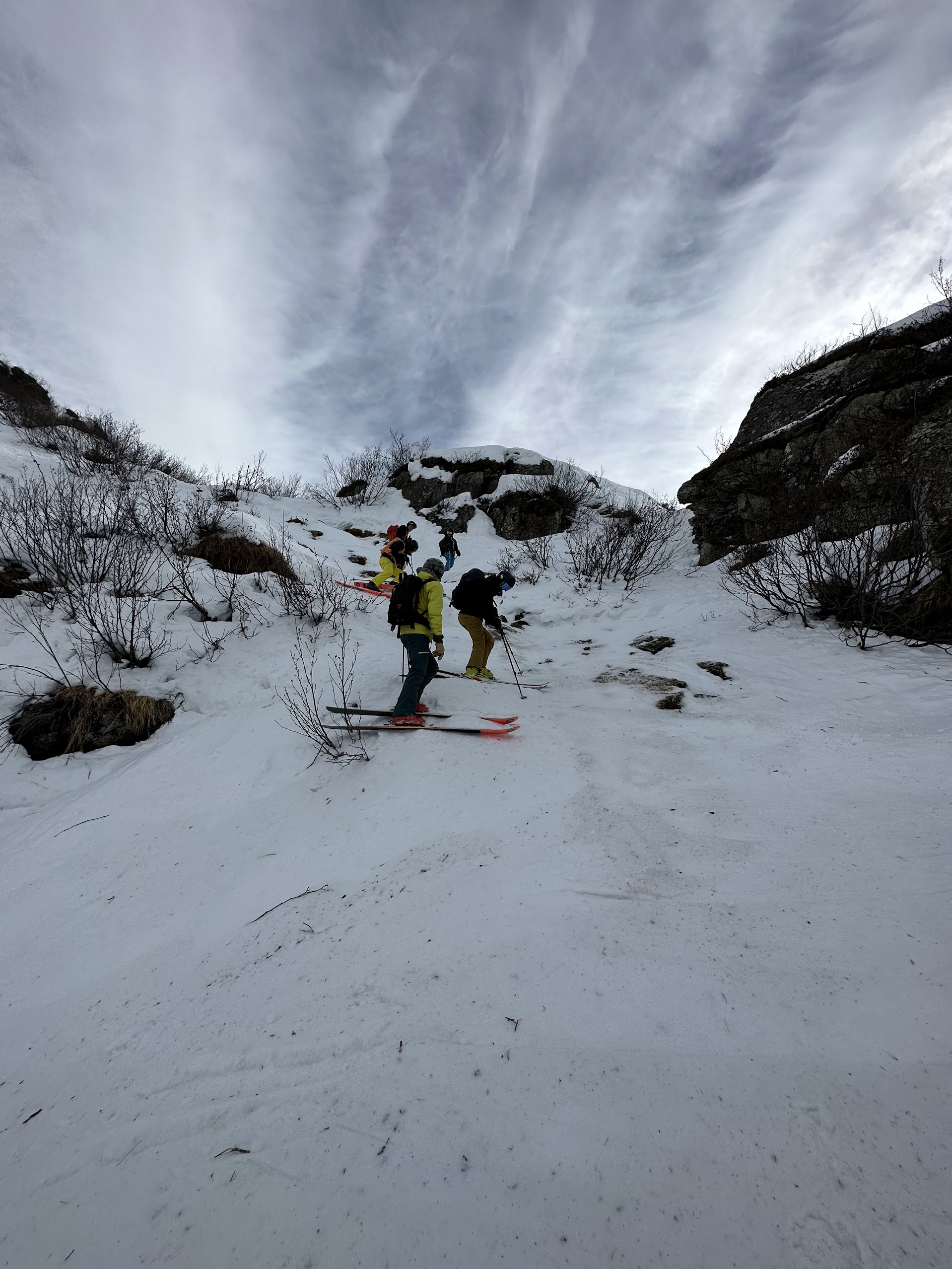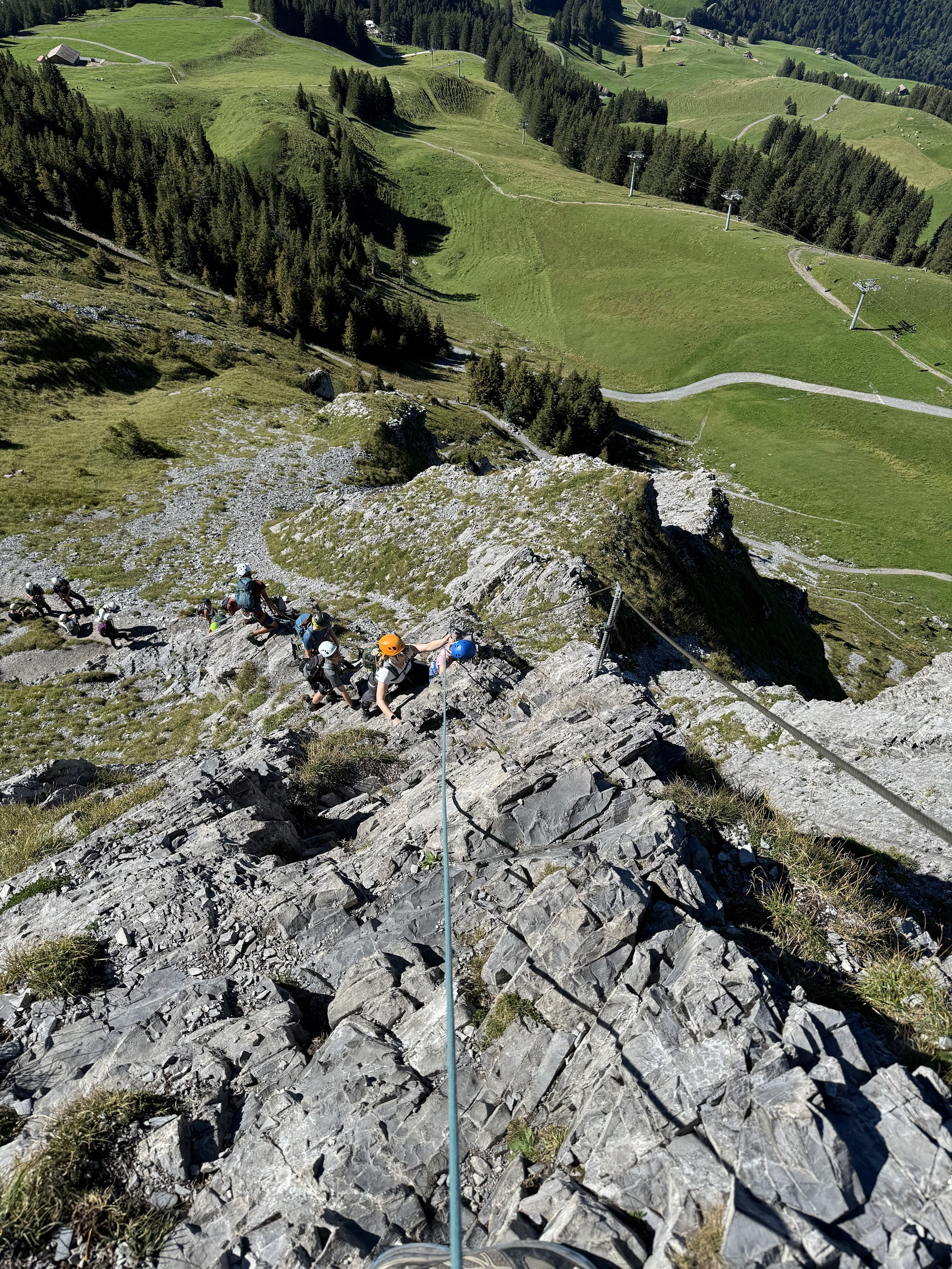I’m afraid of heights. Ok, this seems to have truly nothing to do with tech or everyday problems. But it’s become a problem for me, so I’m stretching my definition of “every day” to this mostly seasonal problem and I’ll also make a point of how tech can get involved with it.
The Birth of a Fear and a Mountain-Sized Dilemma
I can’t remember being particularly afraid of heights as a kid. But after my daughter was born, something changed. Suddenly, any exposure to heights – even just being close to a cliff or steep drop – would trigger a proper physical reaction.
Thanks to not living or working in a skyscraper, it’s not a real problem in my everyday life. And as a family member pointed out, I could just, you know, avoid the exposure. But here’s the thing: I LOVE the mountains and fell in love with off-piste skiing and ski touring. When my fear of heights started kicking in, even a gentle slope 100 meters away from the edge of a cliff gave me anxiety. It affected my skiing technique, my posture became too back-seated, and I was no longer in control. That’s a problem especially off-piste: to be safe, I needed to better deal with that fear.
Baby Steps and Great Advice
Having started skiing as an adult only, I figured maybe I just needed a better technique and signed up for a ski technique camp. To bring that to different snow conditions, I did a powder skiing class and a freeride camp.

The “powder” of that powder skiing class
And sure enough, the fear came along for the camp. However, my instructor managed to give me a different perspective on it. When he and a few others dropped over a small cliff, it got me curious enough to ski nearby (but ultimately ski around the drop.) Afterwards, he asked me: “did you think about dropping in, too?” In fact, I did for a split second and that’s when what he shared reframed my thinking:
Not-so-scientific stages of tackling fears
- Be terrified and avoid that situation at all costs.
- Daring to get close, but still thinking “Hell no!”
- Considering the possibility.
- Do it!
He pointed out that even by entertaining the idea of the drop, I was already further ahead than I might have thought. This simple reframe gave me such a confidence boost. I realized I’d been stuck at stage 1 for so long, actively avoiding any exposure to heights. But the steps I was taking would take me in the right direction if I didnt give up.
Can Tech Simulate Real Exposure?
Inspired by that and because it can be hard to get out into the mountains regularly, I started wondering – could technology help accelerate that journey? I remembered a VR demo I’d tried years ago at Georgia Tech, where you walked on a real plank put on the floor with a VR headset. Georgia Tech’s research in this space is going back to 19951. In the virtual environment, you’d walk down the plank over the side of a skyscraper. The immersion I remember was incredible, triggering that stomach-dropping sensation of being up high.
So I thought, let’s try this again and I watched POV videos of crazy mountain bikers, skiers and even wingsuit flying, tried a VR game “The Climb”, a smartphone-based VR app called “EASYHEiGHTs” designed specifically to conquer the fear of heights. This app from the University of Basel was also studied app use2. I would lie though if I said I used it that frequently. But I have to say that I simply didn’t notice the same physical reactions as when on an actual mountain.
However, when I recently tried my very first baby Via Ferrata Brunnistöckli in Engelberg, it didn’t feel quite as intense as I was afraid it would. So maybe the exposure to heights in VR had been helping after all and increased my “cliff tolerance”? Or perhaps it was a different kind of trust in technology – the advanced technology of the rope system – that helped me calm my nerves?

Mountains and the outdoors might not be everyone’s cup of tea. And there are also plenty of ways of enjoying it without exposing one to a potential fear of heights. But I do think that there’s value in exposing oneself to one’s fears, whatever that might be. Especially for people like me who spend the majority of their lives in environments designed for human’ comfort. While I have absolutely nothing in common with Alex Honnold, what he said in this interview resonates with me:
“If you don’t experience real fear from time to time, you don't experience real danger, then your mind just sort of creates fear out of nothing.”
And tech will only get you so far in providing that “real fear.”
Footnotes
-
Virtual Reality Conquers Fear of Heights, in New York Times, Daniel Goleman, June 21, 1995 ↩
-
Bentz, D., Wang, N., Ibach, M.K. et al. Effectiveness of a stand-alone, smartphone-based virtual reality exposure app to reduce fear of heights in real-life: a randomized trial. npj Digit. Med. 4, 16, 2021 ↩